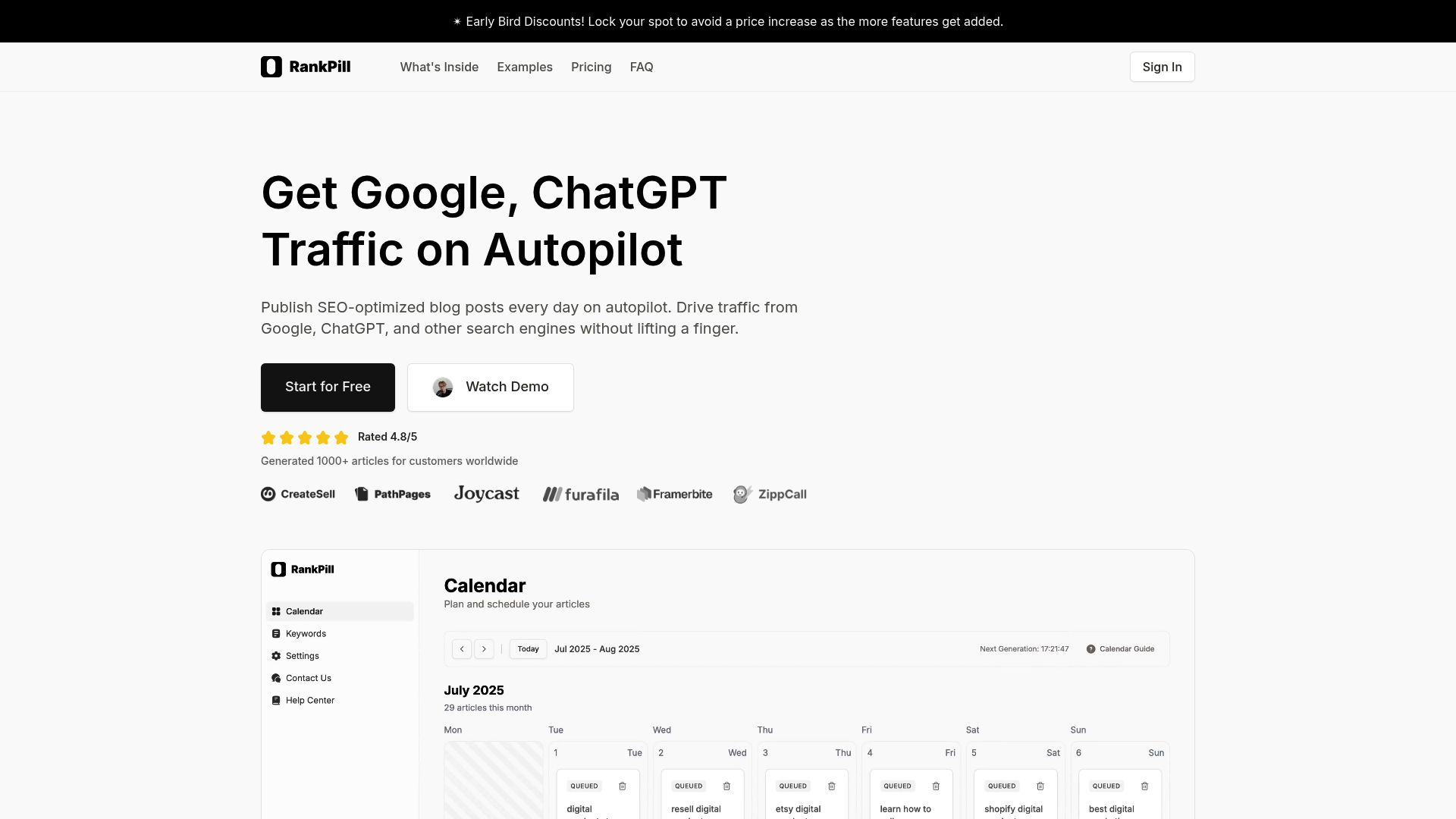The digital search landscape is transforming as AI-powered platforms rewrite the rules. Marketers can no longer rely on traditional methods alone—it's now a world of seo vs geo.
What does this mean for your business? This article takes you inside the new realities of seo vs geo, revealing what separates them and how you can succeed in both.
We’ll break down the fundamentals, compare their impact on visibility, and share proven strategies you can use in 2025. Ready to adapt and future-proof your digital marketing? Let’s dive in.
Understanding SEO: Foundations & Evolution in 2025
Search engine optimization has long been the backbone of digital visibility. In the ongoing debate of seo vs geo, understanding SEO’s roots and its evolution in 2025 is critical. As AI transforms how information is discovered, SEO fundamentals remain vital, though their application is rapidly changing.

What is SEO? The Traditional Approach
SEO, or search engine optimization, is the process of improving a website’s visibility in search engine results like Google and Bing. For years, the core of SEO has revolved around four pillars:
- Keyword research: Identifying terms your audience uses.
- On-page optimization: Crafting pages with targeted keywords, meta tags, and internal links.
- Technical SEO: Ensuring fast load times, mobile responsiveness, and clean site architecture.
- Backlinks: Earning links from reputable websites to boost authority.
Traditional SEO success is measured by metrics such as click-through rate, organic traffic, keyword rankings, and bounce rate. For example, a local café might optimize its site to appear for “best coffee shop in Raleigh,” targeting local searchers and refining its website content accordingly.
But SEO isn’t just about pleasing algorithms. Satisfying user intent—delivering exactly what searchers want—is now just as important as technical tweaks. In 2025, Google and other engines further reward content that demonstrates E-E-A-T: Experience, Expertise, Authoritativeness, and Trustworthiness.
Here’s a quick summary of traditional SEO components:
| Component | Purpose |
|---|---|
| Keyword Research | Find what users are searching for |
| On-Page Optimization | Align content with user queries |
| Technical SEO | Ensure fast, mobile-friendly site |
| Backlinks | Build authority and trust |
Despite advances in AI, 95% of users still rely on search engines for information (Search Engine Land, 2025). While seo vs geo is a hot topic, SEO remains a foundation for online success.
Major SEO Strategies in 2025
As the digital landscape evolves, so do the strategies that drive SEO success. Semantic search and topic clusters have become essential for covering subjects comprehensively and matching nuanced user intent.
Mobile-first indexing and Core Web Vitals are now major ranking factors. Websites must load quickly and provide a seamless mobile experience to maintain visibility. High-quality, original, and authoritative content is more important than ever, as search engines get better at recognizing expertise and penalizing shallow or duplicate material.
Structured data and schema markup allow websites to stand out with enhanced search listings, while AI-powered tools streamline keyword research and content optimization. For example, after a major algorithm update, a site might boost its rankings by fixing technical issues and enhancing schema.
A modern SEO strategy looks like this:
- Organize content into topic clusters for depth
- Prioritize mobile performance and user experience
- Regularly update and audit content for accuracy
- Use structured data to help search engines understand your site
- Leverage AI for smarter keyword insights and optimization (AI and SEO integration)
In the context of seo vs geo, these 2025 strategies ensure your site stays competitive in traditional search while laying the groundwork for broader AI-driven visibility. Technical improvements and authoritative content are now inseparable from long-term SEO growth.
What is GEO? The Rise of Generative Engine Optimization
The digital world is buzzing with talk about the future of search. As AI-powered platforms reshape how information is discovered and shared, a new discipline is emerging: Generative Engine Optimization, or GEO. In the ongoing seo vs geo debate, understanding GEO is now essential for anyone aiming to stay visible in this evolving landscape.

Defining GEO: Optimization for AI-Driven Platforms
GEO focuses on optimizing digital content specifically for AI-driven platforms like ChatGPT, Google SGE, and Bing Copilot. While traditional SEO aims to climb the ranks of search engine results, GEO is all about making your content easy for AI to find, understand, and cite directly in its answers. This shift is a pivotal aspect of the seo vs geo conversation.
The core difference? GEO prioritizes extractability and factual clarity. AI engines don't just list links—they generate answers. Content needs to be structured so that AI models can quickly pull precise facts, statistics, and authoritative references. For example, a well-organized blog post with clear headings and concise data is more likely to be cited in a ChatGPT response than a dense, unstructured article.
Success in GEO is measured differently from SEO. Instead of focusing solely on rankings or organic traffic, GEO tracks how often your content is cited by AI, how frequently it's included in generative answers, and your share of voice within AI responses. This reflects a significant change in the metrics that matter in the seo vs geo landscape.
Why does this matter now? AI tool adoption has soared to 38% in 2025, according to Search Engine Land. Yet, traditional search still holds the majority, making it crucial to understand both approaches. For those wanting a deeper dive into GEO, this Generative Engine Optimization guide offers a comprehensive overview.
Core GEO Techniques & Best Practices
To excel in GEO, your content must be designed for both human readers and AI models. Here are the most effective techniques for staying ahead in the seo vs geo race:
- Use extractable headings: Break content into clear, descriptive sections.
- Write concise, factual statements: Make facts and takeaways easy for AI to extract.
- Add authoritative references and expert quotes: Boost credibility and AI trust.
- Incorporate structured data and markup: Help AI engines parse your content accurately.
- Audit and refresh content regularly: Update data, sources, and structure to maintain relevance.
Consider this transformation: An article packed with long paragraphs and few headings is less likely to be picked up by AI. By turning it into scannable sections with bullet points, summary boxes, and updated facts, you dramatically increase the chances of being cited in generative answers.
The seo vs geo approach is not just about optimizing for two different platforms—it's about rethinking how information is presented. GEO demands clarity, structure, and credibility at every turn. As AI continues to play a larger role in search, mastering these best practices will be key to staying visible and authoritative.
SEO vs GEO: Key Differences and Overlaps
The debate around seo vs geo is heating up as digital platforms evolve. Marketers are navigating a landscape where both traditional search and AI-driven engines demand attention. Understanding the distinct roles of SEO and GEO is now essential for anyone aiming to maximize visibility in 2025.

Fundamental Differences Between SEO and GEO
At their core, seo vs geo reflects two optimization philosophies. SEO targets classic search engines like Google or Bing, focusing on ranking signals such as keywords, backlinks, and user experience. In contrast, GEO is all about making content easily extractable and citable for AI-powered engines like ChatGPT or Google SGE.
Here's a quick comparison:
| Feature | SEO (Search Engine Optimization) | GEO (Generative Engine Optimization) |
|---|---|---|
| Target Platform | Search engines | AI-driven engines |
| Key Focus | Ranking signals, traffic | Extractability, AI citations |
| Metrics | Rankings, organic clicks | AI mentions, generative responses |
| Main Techniques | Keywords, backlinks, UX | Factual clarity, structure, sources |
| Example | Clicks from Google | Mentions in ChatGPT answers |
While seo vs geo both seek to connect users with the right information, the journey is different. SEO is about climbing the search results ladder, while GEO is about being the answer AI delivers directly. As AI's Impact on SEO Strategies continues to grow, understanding these distinctions is critical for future-ready content strategies.
Shared Foundations and Overlapping Principles
Despite their differences, seo vs geo share foundational pillars. Both prioritize high-quality, accurate, and user-centric content. Understanding user intent is just as vital for AI-driven discovery as it is for traditional rankings.
Both approaches benefit from clear content structure:
- Use of descriptive headings and subheadings
- Bullet points and concise summaries
- Content updates to stay relevant
A well-structured FAQ page is a great example. It can boost SEO rankings by answering common queries, while also making information scannable for AI engines. In seo vs geo, clarity and structure unite both worlds, ensuring content reaches audiences—regardless of how they search.
Ongoing optimization is another shared principle. Regularly reviewing and refreshing content keeps it aligned with evolving algorithms and AI models. Ultimately, both strategies aim to provide trustworthy answers in an accessible format.
Challenges Unique to Each Approach
While seo vs geo overlap in some areas, each comes with its own set of challenges. For SEO, the main hurdles include algorithm updates, avoiding penalties for low-quality or duplicate content, and keeping up with ever-changing ranking factors.
GEO poses different obstacles. Content must be structured for AI to extract and cite it accurately. Overcoming generic or shallow AI-generated content is a constant concern. There's also the risk that content optimized for GEO may lack the depth and nuance expected by human readers.
Consider these unique challenges:
- SEO: Navigating search algorithm changes, maintaining originality
- GEO: Achieving AI citation, ensuring factual clarity, avoiding AI hallucinations
- Quality risks: Shallow AI summaries (GEO) vs. overlooked but detailed SEO content
Ethical considerations also differ. Transparency and authenticity are paramount, especially as AI-generated content becomes more common. In seo vs geo, balancing depth, accuracy, and discoverability is the real test.
Strategies for Success: Winning in Both SEO & GEO in 2025
Mastering both SEO and GEO is essential for digital marketing success in 2025. As AI-driven engines and traditional search platforms evolve, businesses must craft strategies that address the unique demands of each. Let’s break down the most effective approaches for thriving in the world of seo vs geo.
Building a Dual-Optimized Content Strategy
To win at seo vs geo, start by auditing your existing content. Check if your top-performing articles are both search engine and AI-ready. Look for clear, extractable headings, concise data points, and up-to-date statistics.
Enhance your articles with authoritative sources and expert quotes. Integrate structured data and schema markup, ensuring your content is easily parsed by both search engines and AI platforms. Adding “Key Takeaways” boxes and summary sections can make your content more scannable, which benefits both SEO and GEO.
For a step-by-step guide on dual optimization, see SEO for AI search engines. This resource covers actionable tactics for boosting your content’s visibility across both arenas.
Regular content audits help identify gaps and keep your strategy aligned with the latest trends in seo vs geo. By consistently refreshing your approach, you’ll future-proof your digital presence.
Keyword & Topic Research for Both Arenas
Effective seo vs geo strategies begin with smart keyword and topic research. Blend traditional SEO keyword research with conversational queries and natural language questions. This ensures your content ranks well in search and is extractable by AI-driven platforms.
Leverage AI tools to uncover trending topics, user intent shifts, and question-based searches. For example, tools like SEMrush or Ahrefs can pinpoint high-volume keywords, while AI-driven platforms reveal the questions users ask in real time.
Consider a dual-list approach:
| SEO Keywords | GEO Conversational Queries |
|---|---|
| best coffee shop Raleigh | where to find top coffee in Raleigh |
| SEO strategies 2025 | how to optimize for AI search engines |
By researching for both, you position your content to capture a wider audience and increase mentions in both search results and AI-generated answers. This dual focus is crucial in the ongoing seo vs geo landscape.
Content Creation & Optimization Workflows
Balancing depth and clarity is key for seo vs geo optimization. Write with both human readers and AI models in mind. Use short paragraphs, bullet lists, and clear subheadings to improve scanability.
Integrate multimedia—such as images and videos—to enhance engagement and support extraction by AI platforms. Regularly update your content to ensure factual accuracy and relevance. Quarterly audits are an effective way to refresh statistics, expert insights, and sources.
Consider this simplified workflow for dual-optimized content:
1. Research keywords for both SEO and GEO.
2. Draft content with clear headings and concise facts.
3. Add authoritative references and expert quotes.
4. Integrate structured data and schema markup.
5. Review and update content quarterly.
This approach ensures your content stays competitive in the evolving seo vs geo environment.
Measuring & Tracking Performance
Tracking performance is vital in seo vs geo strategies. For SEO, monitor rankings, organic traffic, and engagement metrics using tools like Google Analytics and Search Console. For GEO, focus on AI citation frequency and your share of voice in generative responses from platforms like ChatGPT or Google SGE.
Set up dashboards to visualize both types of metrics. Identify content gaps and new optimization opportunities by analyzing where your content performs best and where it’s being cited by AI.
Regularly compare both sets of data. This enables you to adjust strategies and maintain visibility as the digital search landscape changes. Staying proactive with your measurement efforts will keep your seo vs geo initiatives ahead of the curve.
Integrating SEO and GEO: Practical Implementation Steps
Successfully combining seo vs geo strategies is essential for future-proofing your content. As search engines and AI platforms increasingly intertwine, marketers must adapt their processes to optimize for both. This section breaks down actionable steps, formatting best practices, and audit routines to ensure your content stands out everywhere.
Step-by-Step Integration Process
To bridge the gap between seo vs geo, start by reviewing your current content library. Identify top-performing SEO assets and assess their readiness for AI-driven platforms. Look for opportunities to add clear subheadings, concise facts, and bullet points—features that make information easily extractable for AI.
Next, update each article with structured data and schema markup. This not only enhances traditional SEO but also signals to AI engines what content is most important. Incorporate authoritative references and up-to-date statistics to boost credibility and increase the likelihood of being cited in generative answers.
Broaden your keyword research to include not just classic SEO terms but also conversational queries and common user questions. Tools like the new Wix's AI Visibility Tool for GEO can help you assess how well your site is optimized for AI-driven results, supporting your dual approach.
Here’s a quick integration checklist:
- Review top SEO pages for AI extraction readiness.
- Add structured data and schema markup.
- Insert authoritative references and fresh stats.
- Expand keyword targets to include natural-language queries.
- Test your content’s appearance in both search and AI tools.
By following these steps, your seo vs geo efforts work in harmony, increasing visibility across all digital channels.
Content Structure & Formatting Tips
A clear, scannable structure is the backbone of effective seo vs geo content. Use short paragraphs—two to three sentences each—to boost readability for humans and improve AI extraction. Every section should have a descriptive heading using relevant keywords, making it easy for AI to identify and cite key points.
Bullet lists, summary boxes, and tables help break up dense information and provide quick reference points for both search crawlers and generative engines. For example, adding a “Key Takeaways” box at the end of each major section highlights main facts for AI-driven answers.
Here are some formatting tips for dual optimization:
- Keep paragraphs short and focused.
- Use bullet points to summarize features or benefits.
- Add summary sections and “Key Takeaways” boxes.
- Ensure every section uses a clear, extractable heading.
- Incorporate tables for comparing seo vs geo strategies.
By prioritizing structure and clarity, you make content more accessible for both traditional search and AI platforms.
Regular Content Audits & Updates
Regular audits are vital to keep your seo vs geo strategy effective. Schedule quarterly reviews to refresh statistics, update expert quotes, and ensure your structure meets current best practices. Monitor how your content performs in search rankings and AI citations, then adjust as needed.
During each audit, check for outdated information and replace it with the latest data. Update schema markup and structured data to reflect any changes in your offerings or industry standards. Assess whether your content still answers both keyword-driven and conversational queries.
A real-world example: After a comprehensive audit, a SaaS company doubled its AI citations without losing organic search traffic. The key? Consistent updates, structural improvements, and a focus on both user intent and AI extractability.
In summary, ongoing content audits ensure your seo vs geo approach remains agile, competitive, and aligned with the evolving digital landscape.
How AI-Powered Platforms Like RankPill Support Dual SEO & GEO Optimization
Navigating the world of seo vs geo is tough—especially as the digital landscape evolves and AI-powered engines reshape how content is discovered. That’s where platforms like RankPill step in, offering solutions that bridge the gap between traditional SEO and the new world of GEO. For businesses and marketers, staying visible in both arenas is essential for growth.

RankPill automates the entire seo vs geo optimization workflow, making it accessible for everyone. The platform uses AI to conduct personalized keyword research, generate articles, integrate structured data, and even embed multimedia elements. This means your content isn’t just optimized for Google rankings but is also primed for AI engines like ChatGPT and Bing Copilot.
Key Features of RankPill:
| Feature | SEO Benefit | GEO Benefit |
|---|---|---|
| AI-driven keyword research | Higher rankings | Better AI query match |
| Automated article creation | Consistent quality | Factual clarity |
| Structured data integration | Enhanced SERP visibility | Easier AI parsing |
| Auto-linking & multimedia | Richer engagement | Improved AI extraction |
The real magic of RankPill lies in its ability to help both SMBs and agencies scale content for the seo vs geo era. With competitor analysis, SERP data monitoring, and regular content audits, users can ensure their strategy aligns with best practices—without needing deep technical know-how.
For those looking ahead, automation is no longer a luxury but a necessity as the complexity of search grows. RankPill users are already seeing measurable gains in rankings and AI-driven traffic. Curious about where these trends are heading? Check out Future trends in SEO for more insights on what’s next in the seo vs geo landscape.
Future Outlook: The Evolving Search & Content Landscape
As we look toward 2025 and beyond, the digital search ecosystem is evolving faster than ever. The conversation around seo vs geo is no longer theoretical—it's central to how brands plan, compete, and remain visible in a multi-channel world.
The Shift Toward AI-Driven Search Experiences
AI-driven search platforms are rapidly changing the rules. Instead of just providing a list of links, engines are now delivering direct answers, summaries, and even personalized recommendations. This shift is redefining seo vs geo, as businesses must now optimize for both traditional search engines and generative AI systems.
According to Google's AI Mode and Search Evolution, the introduction of AI-powered search modes is pushing marketers to rethink how their content is discovered and cited. Brands that adapt to these new experiences are more likely to secure both organic traffic and AI-generated visibility.
Multimodal Content and Integrated Strategies
The future of seo vs geo will be shaped by the rise of multimodal content. Text, images, videos, and even interactive elements are now being indexed and surfaced in both search engine results and AI-generated responses.
Integrating conversational AI with search engines, such as SGE or Bing Copilot, means content must be both discoverable and easily extractable. As highlighted in AI's Role in Future SEO Trends, leveraging AI for keyword research and topic optimization is becoming essential for a competitive edge in seo vs geo.
- Use a blend of formats to reach diverse audiences
- Structure content with clear headings for AI extraction
- Regularly update assets to maintain relevance
Staying Agile: Why Dual Optimization Is Essential
The only constant in the world of seo vs geo is change. Algorithms and AI models are in a state of continual evolution, requiring businesses to stay agile and update their strategies frequently.
Brands that have successfully blended seo vs geo approaches are dominating both traditional and generative search spaces. The takeaway is clear: a dual approach is no longer optional—it's mission critical for future-proofing your digital presence.
Stay proactive, monitor trends, and embrace flexibility. By doing so, you'll ensure your brand remains visible and competitive in every channel as the search landscape continues to evolve.
As we’ve seen, staying ahead in 2025 means mastering both SEO and GEO to maximize your visibility—whether you’re aiming for top rankings or those all-important AI mentions. If you want to simplify the process and get real results without the headaches, there’s an easier way. With RankPill, you can automate content creation, personalize your keyword research, and optimize for both search engines and AI platforms—all in one place. Ready to future-proof your digital strategy and boost your organic traffic? Get Started